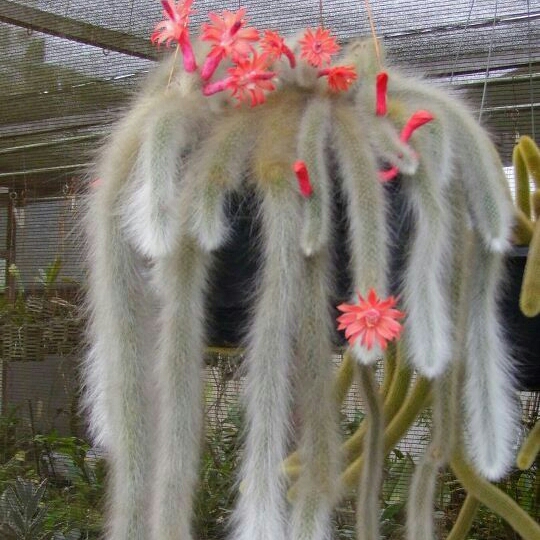
Cleistocactus winteri subs. colademononis
Monkey Tail Cactus
Cleistocactus winteri subs. colademononis, sometimes listed under its old name of Hildewintera colademononis, is a stunning cactus with very long white and soft, hairlike spines. The common name “monkey's tail” refers to the appearance of the hairy stems. It is free flowering and the bright red blooms are particularly decorative.
Contributed by @greenthumbalina
-
Full sun to partial shade
-
Very little water
-
Not Frost hardy
-
Light and free draining
Common name
Monkey Tail Cactus
Latin name
Cleistocactus winteri subs. colademononis
type
Succulent
family
Cactaceae
ph
5.5 - 6.5 Acid - Neutral
Plant & bloom calendar
-
Best time to plant
full grown dimensions
 0.45 M
0.35 M
0.45 M
0.35 M
Cleistocactus winteri subs. colademononis
Cleistocactus winteri subs. colademononis, sometimes listed under its old name of Hildewintera colademononis, is a stunning cactus with very long white and soft, hairlike spines. The common name “monkey's tail” refers to the appearance of the hairy stems. It is free flowering and the bright red blooms are particularly decorative.
Planting young plants
From Early Summer TO Late Summer
Cleistocactus typically don't like direct afternoon sunlight and should be in partial shade through the hottest hours. They can take direct sunlight in the morning and afternoons. A rich, fast-draining cactus mix is ideal. To plant, do this preferably during the warm season. To repot a cacti, make sure the soil is dry before repotting, then gently remove the pot. Knock away the old soil from the roots, making sure to remove any rotted or dead roots in the process. Treat any cuts with a fungicide. Place the plant in its new pot and backfill with potting soil, spreading the roots out as you repot. Leave the plant dry for a week or so, then begin to water lightly to reduce the risk of root rot.
Propagation
From Late Spring TO Late Spring
Cleistocactus is propagated usually by grafting or sometime by cuttings, but the cuttings will generally not root. If you remove an offset, remember to let it dry for a week or so, letting the wound heal (cuttings planted to soon easily rot before they can grow roots). Rooting usually occurs within 3-8 weeks.



























